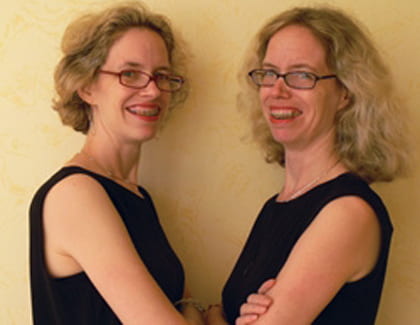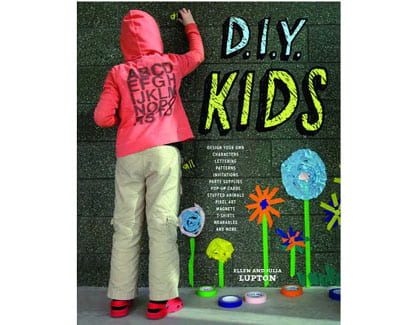Breaking the rules
‘Just say no’ to consumer culture, book encourages kids
Julia Lupton, Chancellor’s Fellow and professor of English and comparative literature, typically writes scholarly works about Shakespeare, but she recently took a break from the Bard to try her hand at an entirely different genre – a design book for kids. Instead of opining on weighty topics such as “Othello Circumcised,” she waxes poetic on Popsicle-stick magnets and Prada-style skirts for teddy bears.
Lupton wrote D.I.Y. Kids (Princeton Architectural Press) with her identical twin sister, Ellen, a graphic designer. Aimed at children ages 7-12, D.I.Y. is short for “design it yourself” and includes instructions for more than 80 graphic, toy, home and fashion projects.
“I want kids to exit from mainstream consumer culture and learn techniques to leave their own mark on the world,” Lupton says.
Instead of a Barbie or Sponge Bob birthday party, for instance, the book shows kids how to have a “fluffy party” – where all the decorations are fluffy.
“It’s about texture, not a store-bought character,” Lupton says.
Her sister’s two children, her own brood – Hannah, 11, and 8-year-old triplets, Isabel, Lucy and Eliot – and their friends handcrafted every project in the book.
“In most children’s crafts books, adults have made the art. Ours is distinctive. It carries the mark of children. The artwork isn’t as perfect, but it’s authentic,” Lupton says. “Kids have a fresher design sense. They love color, and they’re not afraid to break the rules. It’s empowering to kids who read the book.”
Moms like the projects, too. In a review for Momformation.com, Molly Balint wrote, “I’m not sure who’s enjoying D.I.Y. Kids more right now, my daughter or me, but it is a book full of instruction and inspiration surrounding the ideas of design.” Parent & Childmagazine chose it as a “Best Book of 2007,” praising its “kid-friendly” projects.
Most projects can be made with stuff found around the house – office supplies, Sharpie pens, index cards, cereal boxes, colored masking tape, leaves, dried pasta, paints and markers. One project features “ketchup dolls,” inspired by the time Lupton’s children entertained themselves at a fast-food restaurant by drawing faces on ketchup packets.
“They played with them for hours – until they killed them,” she jokes.
It’s no surprise that, as children, the Lupton sisters were encouraged to make things. They grew up in Baltimore, in a “hippie household” of “little TV and a lot Magic Markers and typewriters. We were constantly publishing.”
They decided to do a kids’ craft book after Ellen published D.I.Y.: Design It Yourself, aimed at 20-somethings who wanted to make their own T-shirts, totes and other projects. They’re now working on a book for their generation – primarily working women in their 40s interested in “creating original lives in a mass-marketed world.” Design Your Life will share the Luptons’ philosophy on home, kids, recycling, organizing, body and mind.
“It’s not project-based,” Lupton says. “It’s thinking about applying design theory to problems of everyday life.”
They share their ideas about design on two blogs, www.design-your-life.org and www.diykids.org.
Lupton continues to publish books on the Bard; her next title,Thinking with Shakespeare, includes essays examining Shakespeare’s plays in relation to social and political life. She’s also launched a UCI Design Alliance for faculty, staff and graduate students “to build a design discourse across campus” – proving you’re never too old to color outside the lines.


